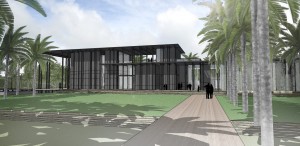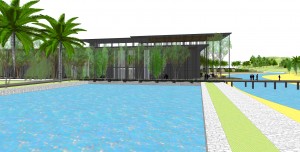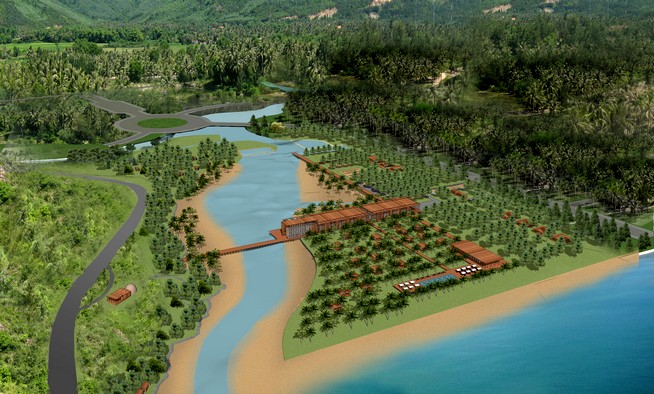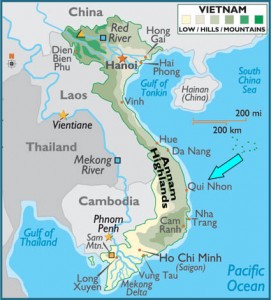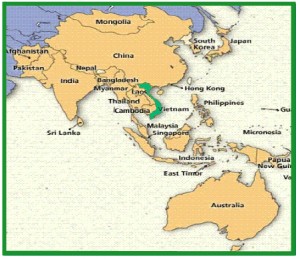Activities of ICISE
Once it has opened, the Centre will host annually a dozen high-level international and regular national conferences, in all disciplines (basic and applied science, medicine, humanities and social sciences). Each conference will bring together between 70 and 150 participants for stays of up to 5 to 6 days.
The Centre will also host several two-week thematic schools, involving groups of 40 to 50 students and junior researchers, coming mainly from South East Asia, accompanied by senior lecturers from Asia, Australia, Europe and the Americas.
International Center for Interdisciplinary
Science and Education in Vietnam (ICISE)
We have witnessed in the past decade the rapid economic development of the emerging nations, such as Vietnam, on the Pacific Rim. However, a large gap exists between such a rate of expansion and the current level of scientific activity in these countries. It is a fact that a strong economy goes hand in hand with a solid scientific and technological development. It is also recognized that the emerging countries on the Pacific Rim have a large pool of talented students eager to participate in existing and future scientific projects. To take advantage of these valuable human resources and to help these developing nations to fully realize their potential, it is important to promote scientific exchange and to share the educational experience of developed and developing countries. From such interactions will be born new ideas on how to integrate and adapt the new technologies within the current global socio-economic and environmental context.
It is with this aim in mind that we propose the creation in Vietnam of an International Center for Interdisciplinary Science and Education (ICISE), where junior and senior scientists, specialists from many different disciplines, can meet and exchange ideas in a convivial and relaxed environment.
Why Vietnam : Vietnam is at the cross-roads of the Pacific Rim countries, and it holds an increasingly open policy as well as a strong desire to engage in collaborative projects with the developed world. The country already hosts a variety of regular international scientific and educational events: conferences, thematic schools and teacher training meetings. The Center would consolidate many of these, to date dispersed, activities.
The Center will benefit from the experience gained in organizing the Rencontres de Moriond since 1966, the Rencontres de Blois since 1989, the Rencontres du Vietnam since 1993 and the annual Vietnam School of Physics since 1994. These events have provided us with valuable insights into the most efficient ways to stimulate interaction and foster networks of collaboration as well as friendship between scientists from the Eastern and the Western worlds.
Human Potential: Excellent on an individual level, systematically high performance in the International Science Olympics and regular admissions to prestigious schools and universities in Europe and the US.
When: First year of operation will be 2013.
Who: Association Rencontres du Vietnam, Chairman Jean Tran Thanh Van
Practical Aspects:
Together with Nha Trang and Da nang, Quy Nhon has been targeted by the government for priority development in Central Vietnam. Over half of the 1.3 million population is of working age: the region is likely to develop rapidly during the coming decade. There are 2 universities with 30 000 students including a science faculty with about 300 lecturers and 15 000 science students. The area is attractive from many points of view. Historically, it hosts many interesting sites, and has considerable tourist potential, with unspoiled seafronts, neighbouring tropical forests and mountains etc…
Support: The Centre will attract leading international scientists to the region; their presence will in turn encourage the development of science education in Vietnam and the Pacific Rim region. The government of Vietnam, the provincial government of Binh Dinh as well as the University of Quy Nhon are extremely supportive of this project.
Design and Architecture: Studio Milou, founded by Jean-Francois Milou, is in charge of the project. It is renowned for its expertise in designing architectures with a cultural or educational focus. Studio Milou, based in Paris and Singapore, recently won the world-wide competition to design the National Museum of Art in Singapore. Jean-Francois Milou and architect Thomas Rouyrre are both closely involved in the project.
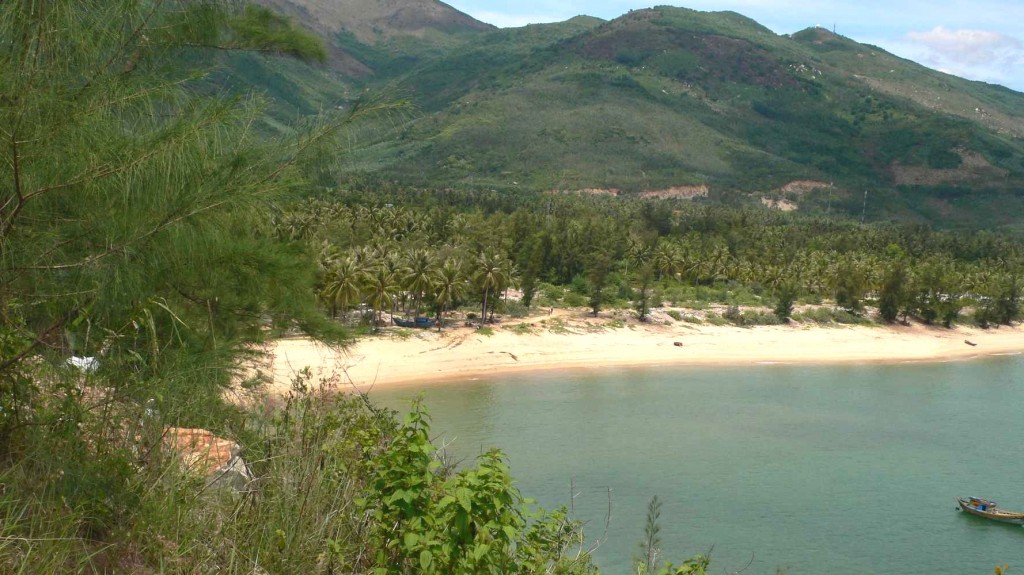 The site of the International Center at Quy Nhon, Binh Dinh, Vietnam
The site of the International Center at Quy Nhon, Binh Dinh, Vietnam
Once it has opened, the Centre will host annually a dozen high-level international and regular national conferences, in all disciplines (basic and applied science, medicine, humanities and social sciences). Each conference will bring together between 70 and 150 participants for stays of up to 5 to 6 days.
The Centre will also host several two-week thematic schools, involving groups of 40 to 50 students and junior researchers, coming mainly from South East Asia, accompanied by senior lecturers from Asia, Australia, Europe and the Americas.
International Center for Interdisciplinary
Science and Education in Vietnam (ICISE)
We have witnessed in the past decade the rapid economic development of the emerging nations, such as Vietnam, on the Pacific Rim. However, a large gap exists between such a rate of expansion and the current level of scientific activity in these countries. It is a fact that a strong economy goes hand in hand with a solid scientific and technological development. It is also recognized that the emerging countries on the Pacific Rim have a large pool of talented students eager to participate in existing and future scientific projects. To take advantage of these valuable human resources and to help these developing nations to fully realize their potential, it is important to promote scientific exchange and to share the educational experience of developed and developing countries. From such interactions will be born new ideas on how to integrate and adapt the new technologies within the current global socio-economic and environmental context.
It is with this aim in mind that we propose the creation in Vietnam of an International Center for Interdisciplinary Science and Education (ICISE), where junior and senior scientists, specialists from many different disciplines, can meet and exchange ideas in a convivial and relaxed environment.
Why Vietnam : Vietnam is at the cross-roads of the Pacific Rim countries, and it holds an increasingly open policy as well as a strong desire to engage in collaborative projects with the developed world. The country already hosts a variety of regular international scientific and educational events: conferences, thematic schools and teacher training meetings. The Center would consolidate many of these, to date dispersed, activities.
The Center will benefit from the experience gained in organizing the Rencontres de Moriond since 1966, the Rencontres de Blois since 1989, the Rencontres du Vietnam since 1993 and the annual Vietnam School of Physics since 1994. These events have provided us with valuable insights into the most efficient ways to stimulate interaction and foster networks of collaboration as well as friendship between scientists from the Eastern and the Western worlds.
Human Potential: Excellent on an individual level, systematically high performance in the International Science Olympics and regular admissions to prestigious schools and universities in Europe and the US.
When: First year of operation will be 2013.
Who: Association Rencontres du Vietnam, Chairman Jean Tran Thanh Van
Practical Aspects:
Together with Nha Trang and Da nang, Qui Nhon has been targeted by the government for priority development in Central Vietnam. Over half of the 1.3 million population is of working age: the region is likely to develop rapidly during the coming decade. There are 2 universities with 30 000 students including a science faculty with about 300 lecturers and 15 000 science students. The area is attractive from many points of view. Historically, it hosts many interesting sites, and has considerable tourist potential, with unspoiled seafronts, neighbouring tropical forests and mountains etc…
Support: The Centre will attract leading international scientists to the region; their presence will in turn encourage the development of science education in Vietnam and the Pacific Rim region. The government of Vietnam, the provincial government of Binh Dinh as well as the University of Qui Nhon are extremely supportive of this project.
Design and Architecture: Studio Milou, founded by Jean-Francois Milou, is in charge of the project. It is renowned for its expertise in designing architectures with a cultural or educational focus. Studio Milou, based in Paris and Singapore, recently won the world-wide competition to design the National Museum of Art in Singapore. Jean-Francois Milou and architect Thomas Rouyrre are both closely involved in the project.
 The site of the International Center at Qui Nhon, Binh Dinh, Vietnam
The site of the International Center at Qui Nhon, Binh Dinh, Vietnam

